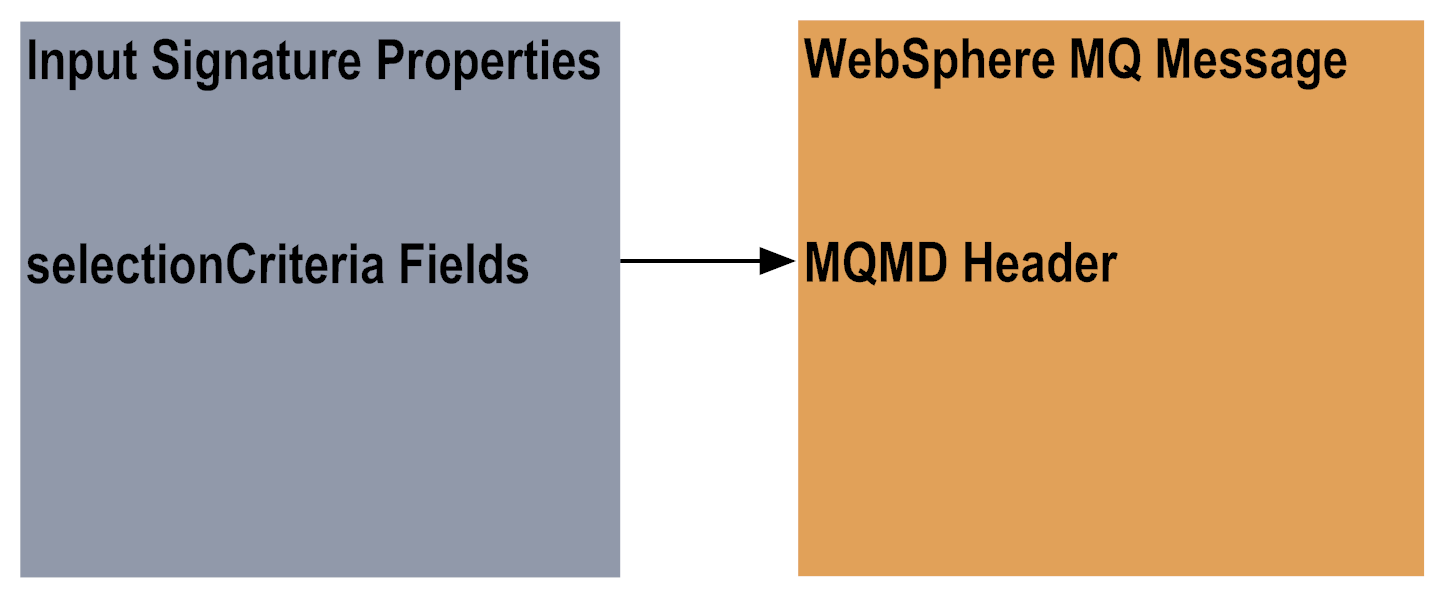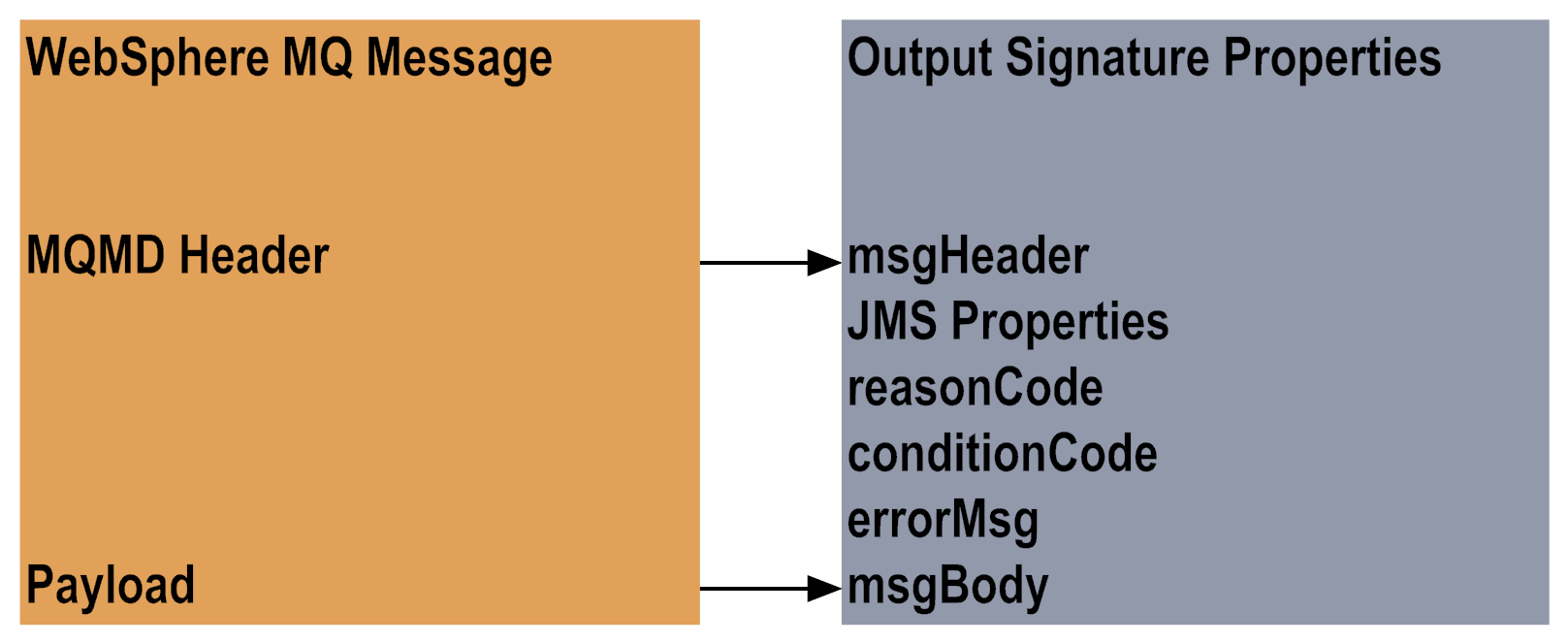

Step | Description |
1 | A flow or Java service, typically invoked by an Integration Server client, initiates the Peek service on the Integration Server. You configure the Peek service, and the wrapping flow or Java service, using Designer. |
2 | The Peek service retrieves a connection from the service's associated connection pool. The connection uses the WebSphere MQ client libraries to peek at messages on a queue. You configure and enable the adapter connection using Integration Server Administrator. For more information about connection pooling, including the runtime behavior of connection pools, see
Connection Pools. |
3 | The Peek service uses the values from the input signature fields as filter criteria. You define the Peek service's input signature when you configure the service. The fields that you select on the MQMD Header tab in the adapter service become the service's input signature. The following diagram illustrates the Peek service's input signature properties where the selectionCriteria fields are copied into the MQMD Header:  |
4 | The Peek service retrieves a copy of the message from the WebSphere MQ queue and leaves the original message on the queue. The MQDocument, or the properties from the Peek service's output signature, contain the retrieved MQMD properties, JMS properties, and the payload. |
5 | The Peek service returns a message to Integration Server that contains output signature properties. You define the Peek service's output signature when you configure the service. The fields that you select on the MQMD Header tab and the JMS Properties tab become the service's output signature. The reasonCode, conditionCode, and errorMsg properties are also returned in the output signature's document. The following diagram illustrates the Peek service's output signature. The MQMessage's payload is mapped to the Peek service's msgBody and the MQMD Header fields are copied back to the msgHeader properties:  |